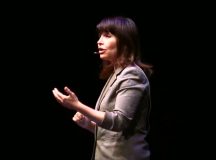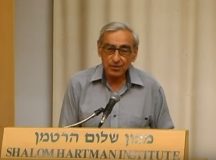Perry Anderson’s Reactionary Fantasy
Editorial introduction to the Symposium: Perry Anderson’s long essay, ‘The House of Zion’, was published in the November-December 2015 issue of New Left Review, the ‘flagship journal of the Western Left’. Fathom invited Shany Mor, Cary Nelson, John Strawson, Michael Walzer, Mitchell Cohen and Einat Wilf to respond to Anderson’s essay.
Available online, and given the status of an NLR ‘Editorial’, it was the Marxist equivalent of a Papal edict. Anderson was the journal’s long-time editor, and is perhaps the most gifted intellectual historian of his time, author of Lineages of the Absolutist State, Passages from Antiquity to Feudalism, Considerations on Western Marxism, English Questions, The Origins of Postmodernity, and more. In this outing, Anderson serves as episcopus servus servorum Dei, or, the servant of the servants of God (in this case a secular God). Over 14,000 words, he excommunicates the two-state solution to the Israeli-Palestinian conflict and anoints an alternative: ‘the demand for one state is now the best Palestinian option available.’
Anderson’s essay is a summa of the thinking of the Left that has lost its way on the question of Israel. For one thing, his proclamation proceeds untouched by the categories with which classical Marxism has traditionally approached unresolved national questions: ‘internationalism’, ‘chauvinism’, ‘peace between nations’, ‘people’, ‘class’, ‘consistent democracy’, ‘the right to national self-determination’, ‘minority rights’, and ‘federalism’. Instead he prefers the decidedly non-Marxist categories of ‘the Arab states’, ‘their traditional enemy’, the homeland’, ‘the West’, ‘Arab turbulence’, ‘the Zionists’, ‘the Resistance’ and ‘the New World Order’.
Anderson’s dream that the ‘strategic emplacements’ of the Arab states will end the existence of Israel is a far cry from the Marxism of Lenin, who believed national self-determination and consistent democracy was the way to ‘clear the decks for the class struggle’; from the sophisticated discussions of the national question, the rights of peoples, and the mechanics of federalism of the first four congresses of the Communist Third International; and from Trotsky’s late support of the Jewish people’s right to survival as a nation and to live as a ‘compact mass’. In place of all that, conspiracism is passed off as sophisticated geopolitics, class politics is bracketed ‘for the duration’, and fascistic political forces are embraced as ‘the resistance’.
*
Cary Nelson argues that Perry Anderson’s essay ‘The House of Perry Anderson’s House of Zion: A Symposium | Michael WalzerZion’ is a despairing and reactionary fantasy, lending a ‘left-wing’ veneer to the revanchist Arab and Iranian programme to bring the Israeli narrative to a conclusion by force of arms.
‘Without a revolutionary transformation of the surrounding Arab landscape, bringing an end to its suffocating universe of feudal autocracy and military tyranny, client regimes and rentier states, which religious wars now cross-cut but do not alter, the chances of emancipation in Palestine are small … An island of Palestinian democracy of any kind, preamble to a single state or otherwise, is unlikely in a sea of despotism. Nor will Israel ever yield its positions of strength until it is confronted with a real threat in the Middle East, which can only come when the region is no longer a zone on whose corruption and submission Washington can rely. Only then, faced with an Arab solidarity in control of its own natural resources and strategic emplacements, would the United States have reason to oblige its alter ego to come to terms (37).’ Perry Anderson, The House of Zion, New Left Review, November-December 2015.
This must surely be among the most dystopian of recent scenarios of how the Arab-Israeli and Israeli-Palestinian conflicts might play out in the future. If these are the conditions necessary for the realisation of a Palestinian state, certainly many of us may be confident we will not live to see them come to pass. Although Anderson would like to see democracy flower in the desert, his dream is of a consolidation and concentration of Arab power. Economic power, to be sure, but also military and political power (‘strategic emplacement’) of the sort the Soviet Union once wielded.
One test of political realism is whether it is possible to work backwards from a goal, and then develop a strategy to move towards it. However, it is impossible to do that for Anderson’s goal. What would be the stage preceding the democratic utopia which sweeps aside the Arab regimes? A region-wide socialist revolution? What would be the step before that? Why would the next Arab Spring turn out differently to the last? Anderson suggests no programme at all. More: exactly why anyone sharing Anderson’s vision would make any moves toward a resolution of the Israeli-Palestinian conflict is unclear, given that the ultimate conditions he posits for success are virtually fantastical – the overthrow of all Arab regimes, an end to the Sunni/Shia conflict, and a region-wide coalition focused on destroying the Jewish state.
Anderson is equally fantastical about what should happen in Palestine. He wants a fully implemented Palestinian right of return and a ‘democratic’ state that would correct all the injustices imposed in Israel’s creation. The 1947 division of territory Anderson considers an obscenity, the starting point for ‘the enormity of the plunder seized by the conqueror’ (31). Jews and Arabs need to be realigned with comparable land, resources, and power. That could certainly not be realised without considerable dispossession of Jewish property rights – homes, businesses, farms, and cities. But anything short of that, so he thinks, would fail to deal with ‘the staggering inequality between Palestinians and Jews, founded on ruthless dispossession of one party by the other’ and would be ‘a continual, burning source of anger’ (32). In a two-state settlement, these unresolved injustices would have to be ‘held at bay, at gun point, along the border,’ but nothing would prevent them from ‘haunting the streets and cities of a single state, every monument of wealth and privilege a daily reminder of original theft’ (32). One must therefore decide ‘what is to happen to this property and these people’ (31). Some of ‘these people’ expect to have the dispositive say in what happens to their private and communal property.
Contrary to Anderson’s convictions, people can set aside the past and get on with their lives if their lives seem worth living. The wave of stabbings and car rammings in the West Bank remind us again that many young Palestinians do not now believe they have a future or that their lives are worth living, but if they had jobs and homes and families and a secure sense of power over their daily lives matters would be different. As much as anything else, it is current conditions which keep resentment over 1947 and 1948 alive. But he is also wrong about the Israelis. A programme for the wholesale dispossession of Israelis would be a recipe for civil war. The only thing Anderson proposes to keep that at bay is the coordinated and militarised determination of the Arabs and Iranians to bring the Israeli narrative to a conclusion.
Anderson’s Articulate Rage
Anderson’s rage against the Jewish state is common enough. The articulate expression he gives it is not. Like many other boycott, divestment and sanctions (BDS) advocates, he finds nothing of merit about Israel. It is a demonic regime reaping benefits for an undeserving Jewish population. The country radiates ‘a philistine machismo and lowest common denominator popular culture’ that is only ‘seemingly fractious’; it is really ‘substantially fixed.’ ‘Even if the vast critical reserves in the European Jewish past could never be completely neutralised,’ they have failed to impact a Jewish culture in Palestine that has ‘been deadening for intellectual life.’ ‘Arguably there is no other culture,’ he brazenly concludes, ‘that combines such dismissive cynicism with such reflex conformism’ (15).
For Anderson the Jews had admirable tendencies in Europe, but they became thugs and philistines in Jerusalem and Tel Aviv. Could they become good Jews again if they returned to Germany and Poland? That is a question Anderson apparently imagines his fantasised Arab solidarity can resolve. Most of us who have spent time in Israel find prejudice and bias that is deeply disturbing but also vibrant and nonstop debate and a wide diversity of opinion. Reading books by Israelis, Jews and Arabs alike, watching Israeli films, by Jews and Arabs alike, reveals intellectual and creative communities as rich and compelling as any on earth. Anderson instead sees everything about the country through a glass darkly. Everything Israeli since 1947 is grounded in original sin. Thus he voices his nostalgia for the time when the Arab states at least mounted ‘a concerted front against what was once commonly stigmatised as a new Crusader state’ (21).
Part of Anderson’s anger is based on his long-term anti-capitalist beliefs. In his eyes, Israel is a singularly repellent example of capitalist exploitation, of ‘the animal spirits of business’ (12) because all its accomplishments are contaminated and compounded by the ‘bedrock enormity’ (35) of its foundational crimes: ‘wealth is fabulously concentrated among a handful of nouveaux-riche tycoons, the ten largest Israeli conglomerates controlling a third of the stock market, a pattern no Western bourse can match’ (13). Of course Israel is a much smaller country than Anderson’s presumed comparators, but that is not the only issue. Globalisation, privatisation, and preferential treatment have indeed divided Israelis into a small and wealthy elite, a middle class struggling with housing costs, and the poor, in much the same way that similar cultural and economic changes have restructured the American economy. But it is not proof of Israel’s singularly invidious form of capitalism to remark that it is the site of ‘the first R&D operations to be set up overseas by Intel and Microsoft,’ or, worse still, to argue resentfully, that ‘Israel weathered the financial crisis of 2008 better than any of the economies of Western Europe and North America’ (12).
Anderson makes the remarkable claim that there are no ‘Jewish critiques of Judaism comparable to radical Enlightenment demolitions of Christianity.’ After the ghetto walls fell, he argues, ‘emancipated Jewish minds typically joined secular debates in the still-Christian world, ignoring their own religion’ (14). One must open a response by reminding that philosophy builds on its past, thus that the fierce critiques of Judaism by the prophets remained alive and influential. It was a Jew, Baruch Spinoza (1632-1677) certainly as much as anyone else who, with his critique of Judaism, enabled the Enlightenment critique of Christianity, and Spinoza in turn inherited Moses Maimonides’s (1135-1204) rationalism. During the Enlightenment itself, the ethnic Jews who mounted critiques of Judaism include Heinrich Heine (1797-1856) and Ludwig Börne (1786-1837), both converts to Christianity. But above all it is the omission of Karl Marx’s (1818-1883) essay ‘On the Jewish Question’ (1844) that is most curious. One can readily find a survey of this history in David Nirenberg’s Anti-Judaism: The Western Tradition (2013). One would add the Haskalah movement of the 1780s, itself influenced by the work of Moses Mendelssohn (1729-1786), the Wissenshaft movement of the 1820s, and the Reform movement of the 1840s, all of which embody Enlightenment reactions to and critiques of traditional rabbinic Judaism. In our own time, those engaged critically with Judaism would include Hannah Arendt, but the full list would be very long, including at least a dozen prominent Jewish critics of Israel.
Anderson asserts that one ‘notable late exception’ to the tendency of Jews to avoid critiquing Judaism is Israel Shahak, in his book Jewish History, Jewish Religion: The Weight of Three Thousand Years (2008). It is disturbing to see Anderson praise the book. Shahak, a chemist by training, took up amateur cultural history, inventing unsupportable slanders about Jews, among them his claim that Jews are taught to utter a ritual curse when passing a gentile cemetery and that their practice of hand washing before and after meals includes a homage to Satan.
Equally troubling is Anderson’s description of ‘the need of secular Zionism for a religious appeal to unify a people lacking any common bonds of language or geography, and furnish a theological basis for its claims to the Promised Land’ (14). In fact, as Arthur Hertzberg’s classic collection The Zionist Idea: A Historical Analysis and Reader (1997) makes clear, much of Zionism was fundamentally anti-religious, offering itself as an alternative to traditional Judaism. Secular and nationalist claims dominate the formative history of Zionism, with religious Zionism remaining a minority voice in Zionist politics for most of its history. Of course the Jews of the Diaspora had a sense of belonging to a people with a rich cultural tradition whether or not they were religious. They had both a religious and a historical identification with Palestine, but religion often represented a heritage rather than a practice. And the common language whose existence Anderson denies came both in the form of Yiddish, especially among Eastern European Jews, and later in the form of Israel’s remarkable revival of Hebrew and its transformation into a contemporary language.
Anderson’s claim that ‘the stability of the political system has always pivoted on the co-dependence of Zionism and Judaism’ (14) is fundamentally ahistorical, since the powerful role of religion in Israeli politics does not really begin to take off until Menachem Begin became prime minister in 1977; thereafter, the settlement movement included a strong messianic component. And Anderson’s easy binary overrides the complexity of Orthodoxy in Israeli, which ranges from the small group who reject the idea of a Jewish state entirely to the fanatic and messianic hilltop youth. There are Orthodox Jews who endorse the political liaison with the settler movement and those who reject it. There are Orthodox Jews in the professions and those who devote their lives to study, often with very different world views. If a symbiotic relationship between clericalism and secularism ever was a stabilising force in Israel it no longer is; the relationship between the two impulses is now a source of political instability.
Anderson expresses incredulity that people still cannot believe that a mere six million Jews control the foreign policy of nearly 300 million Americans, a familiar complaint among conspiracy devotees. (16, footnote 28) Anderson likely finished his piece before the nuclear agreement with Iran was concluded, and he anticipated it would be approved, but AIPAC’s inability to scuttle the deal nonetheless undermines the supposed invincibility of the pro-Israel lobby.
Anderson’s Unscrupulous Pessimism
Like Edward Said and Rashid Khalidi before him, Anderson is not kind to the Palestinian Authority (PA) and the national liberation movement it was created to serve: ‘It is difficult to think of any national movement that has suffered from such ruinous leadership’ (33). The challenges facing the movement were:
fatally compounded by the delusions and incompetence of Fatah and Arafat’s leadership. For a quarter of a century, the official aim of the Palestinian Liberation Organisation was to recover the whole territory of the Mandate by force of arms, making an end to Zionism, when it was perfectly clear — American protection alone ruling it out — that there was not the remotest possibility of achieving that. When this finally dawned on Fatah, and the Palestinian National Council accepted the principle of two states, fantasy maximalism capsized into ignominious minimalism … Since then, even the withered stump on offer at Oslo has been whittled down. Instead of claiming the totality of the land, and settling for a remnant, the demand should always have been an equitable distribution of it between its two peoples (34).
But exactly who might have championed this agenda and when? The Arab states were not interested in advocating for Palestinian Arabs in the lead up to the UN vote, and they chose war in 1948, a war which resulted in widely accepted new Israeli state boundaries. Anderson realises there was no appreciable Palestinian movement until the 1960s, by which time Israel was an established state with a larger population and serious metropolitan centres. Why would a campaign for redrawing Israel’s boundaries then have had any international political purchase? And what kind of pressure could have been placed on Israel to make it give up so much of its core territory? Rhetorically, here as elsewhere, Anderson is effective. The accusation of a benighted exchange of minimalism for maximalism is telling, and the ‘withered stump’ image of the West Bank stings so long as you confine your knowledge of the area to what you can see on a map. But if you actually travel the West Bank you realise there is a tremendous amount of land available for development. City after city could be established in this ‘stump’, and industry would have myriad options if it had the funding required. Desalinisation could provide drinking water enough for a larger population. Anderson disparages the West Bank as ‘an outhouse of Israel’ (23), but that image disparages what Palestinians have already achieved under duress.
If you look at a small map of the West Bank it looks like Israeli settlements fill the area, but except for those packed into the thin strip of land west of the security barrier, they are actually thin on the ground and widely scattered. Anderson asserts that ‘the grid of Jewish logistics and pattern of Jewish settlements have sunk too deep to be reversible: Israeli expansion has effectively destroyed the possibility of a second state nested within Zion’ (23), a claim many others echo. But he is wrong. He cites the huge financial costs of moving ‘the 350,000 entrenched in the West Bank’ (30) without even mentioning that land swaps would leave 80 per cent of them in place. The Israeli NGO Blue White Future’s 2013 Voluntary Evacuation Survey gives solid evidence that, provided fair compensation, 30 per cent of the 100,000 settlers east of the barrier would be willing to leave even without a peace agreement; the number grows to nearly 50 per cent in the context of such an agreement. So we start with 50,000 problem settlers, not 350,000. Nor would settlers leave overnight. The withdrawal process would have to be gradual not only for Israel’s benefit but also so the PA could gradually adjust to its new responsibilities. One understands the impulse for catastrophising, even among those – unlike Anderson – who support a two-state solution, because settlement expansion east of the barrier does undermine the possibilities for peace, but settlements have not yet killed the two-state solution. Ari Shavit’s suggestion in 2014, that there remains a ten year window in which to act, seems a fair estimate.
Anderson wants to use that window differently. Among his few specific recommendations is this: ‘a third Intifada would be needed, a popular rising against the repressive Fatah regime’ that would produce ‘a self-dissolution of the Palestinian Authority’ (36). In truth, though his readers may be surprised at his suggestion, Anderson is making a realistic claim here; a new Intifada, even if directed against Israel, would likely kill off the PA. It would also demolish the Palestinian economy for years. But for Anderson progress is impossible, so why not indulge in chaos. Notably, Anderson does not tell us when the next Intifada should take place, whether it should await his region-wide revolution or be instituted tomorrow, but then perhaps there is an element of ahistorical venting in his proposal. Of course the dissolution of the PA would require Israel to reoccupy all of Area A, especially the Palestinian cities the PA now governs, actions which would inevitably include elements of repression. That in turn would increase the sort of West Bank violence that Anderson sees as revolutionary. At least for a time the cycle of violence would escalate. The Oslo process would be decisively ended, its limited benefits quite likely unrecoverable.
In Israel ‘proper’ Anderson wants to see the Arab parties boycott the Knesset, abandoning it for ‘an Aventine assembly based on its own Arab elections’ (36). This would be nothing more than rejectionist symbolism. Once again, for Anderson there is no hope to be found in present realities, but he fails to acknowledge that Arab citizens of Israel currently combine working within the system with public protest and pressure. That positions Arab Knesset members to negotiate practical benefits for their constituency in response to political pressure, including the five year NIS 10-15 billion budget increases announced in December 2015. If those funds materialise, they will help produce the improvements in infrastructure and education Israel’s Arab citizens have long sought.
*
The Arab Economic Development Plan is but one example of the kind of gradualist strategy in which Anderson has no interest since it might broaden acceptance of Israel’s existence and defuse the BDS movement. The present moment may be both depressing and deeply worrisome, but it is a defeatist error to project from Netanyahu’s 2015 victory a permanent or even long-term right-wing consensus among the Israeli electorate. Events can create or dismantle coalitions. The task now is to promote actions and policies that can create a different political landscape. I set out at length what I believe those actions and policies should be in an earlier issue of Fathom. In ‘Multi-stage Coordinated Unilateralism: a proposal to rescue the Two-State Paradigm’ I quoted approvingly the Israeli historian Asher Susser, author of The Two State Imperative, a much more reliable guide than Anderson to this tragic and unresolved national question, and the author of a much more progressive solution:
We, the Israelis have to come to terms with the fact that we may have to withdraw for less than peace, that land for peace may be desirable, but not necessarily fully attainable. Why should we withdraw in the absence of full peace? If we don’t, we are allowing those who resist the idea of peace with Israel, like Hamas and company, to dictate to Israel what kind of country we will live in 10, 20, or 30 years time.
* My thanks to several people in the Alliance for Academic Freedom/Scholars for Israel and Palestine discussion group who helped clarify a number of points.






































Comments are closed.